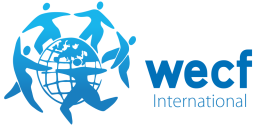Reflections on the Major Groups and other Stakeholders system
Since the adoption of the Sustainable Development Goals, the Major Groups and other Stakeholders (MGoS) have been absolutely critical to the processes of implementation, monitoring, and review of the 2030 Agenda for Sustainable Development.
Each constituency finds ways to self organise its civil society networks to advocate, initiate, and share knowledge in regards to the Sustainable Development Goals, strengthening the efforts of and often working in tandem with other actors in sustainable development. Since the Major Group inception in Agenda 21 at the Earth Summit in 1992, Major Groups and other Stakeholders have only evolved to become more organized. As we continue to pursue the 2030 Agenda, and the conversation around High Level Political Forum (HLPF) reform process, it is critical that civil society remains involved and consulted in the inclusive, structured form already provided and mandated to the MGoS system.
“Women are often not even let in the door. The Major Group structure provides a guaranteed slot in the door. It’s never enough, it’s always very thin, but it’s that guardianship that gives us the chance to make it stronger and is so important.”
This brief paper aims to highlight the construction of the Major Groups, their importance and influence in HLPF and other UN bodies and forums, and the value they – in particular the Women’s Major Group and its structure – hold for advancing feminist perspectives and building women’s power at local, regional, and global levels. Interviews and conversations with current Organising Partners and other members of the Women’s Major Group have informed the personal and organisational testimony this paper relies upon.


